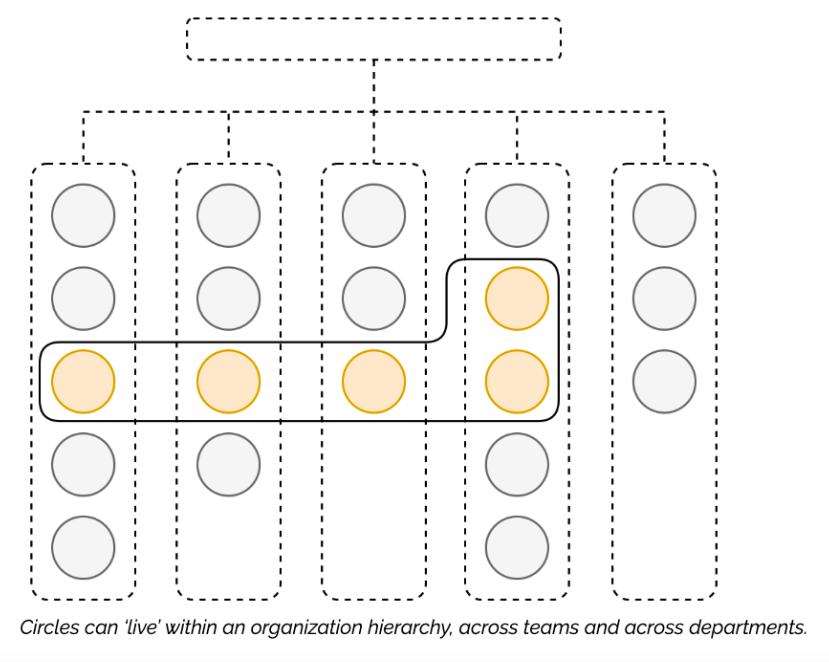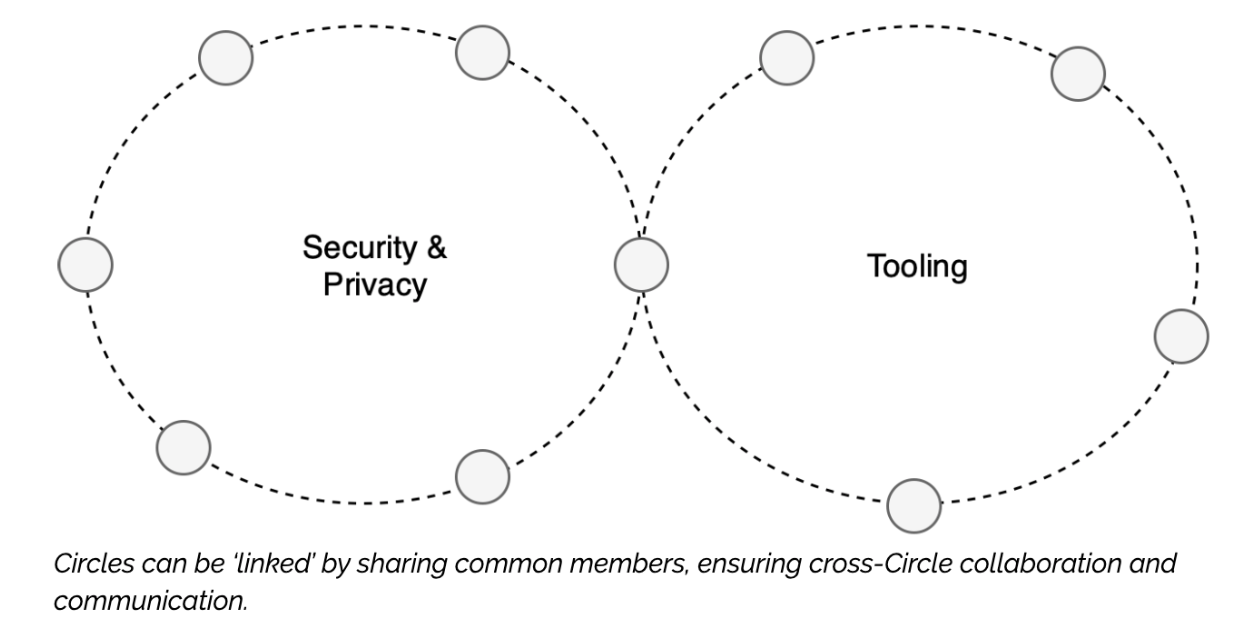You have 1 article left to read this month before you need to register a free LeadDev.com account.
As a leader in a growing organization, one of your primary goals is to build and develop your teams so they can move fast.
You need to be able to make good decisions quickly, and enable your team to turn decision outcomes into action.
But often, the larger an organization becomes, the fewer decisions are actually made, and the harder it gets to turn decisions into action. That’s because growing organizations face several challenges around decision-making:
- There are more specialized stakeholders:
To state the obvious, the more an organization grows, the more people there are. Increasingly those people are specialists: in a small startup you may have one or two engineers covering the entire tech stack; in a big corporation there are dedicated teams for each service or platform. The more stakeholders involved, the more complex and lengthy the decision-making process. - Accountability and responsibilities are blurred:
In growing organizations, the ownership and accountability on certain goals or topics often becomes blurred. Bigger hierarchies tend to reduce the individual’s accountability, and parallel structures develop because it’s often easier to run things locally than to convince your boss or to talk to somebody from the ‘other end’ of the organization. - Communication takes longer:
The more people there are, the more difficult it is to communicate with individuals, or with the organization as a whole. Being in a startup, you can post an important announcement in the #general channel and all seven (or so) team members will see it within seconds and a discussion can happen. In a large organization, this isn’t feasible.
Inevitably, decision-making is slowed down, overheads creep in, decisions are postponed, design happens by committee, and so on. Those decisions that are still taken are often not followed up on, either because people simply aren’t aware of them, they don’t feel affected, or they simply disagree because they didn’t have a say. As a result, the organization suffers from a lack of scalable decision-making.
Introducing the solution: Circles
In software engineering, we’ve learned that any centralized system will eventually hit hard limits and therefore fail to scale further. We can apply the basic techniques of distribution and decentralization to decision-making in organizations, just as we apply them to engineering. In order to scale decision-making within an organization, we can distribute and decentralize decision authority and execution accountability.
One method to achieve this is to install Circles (one of the patterns from Sociocracy 3.0). Circles are groups of five to nine people, coming from different disciplines, departments, teams, and organizational levels, who gather around a specific topic or area of expertise to make and drive forward important decisions. Circles are ‘overlays’ to any organization structure: circle membership is not a full-time role but rather something that members do next to their main duties in their line organization.
A Circle must be given decision-making authority from leadership. If a Circle is meant to be merely a place where people meet for coffee and discuss a topic informally without taking decisions and following up on them, it will fail to achieve scalable decision-making.

Which topics are suitable for Circles?
Some topics are more suitable for Circles than others. In my company, we’ve seen success with the following areas:
- Crewing and hiring:
Growing organizations spend a lot of time and effort on hiring, bringing new people into the organization, and facilitating internal moves and role changes. Depending on the structure of the line organization, making good decisions about how to set hiring priorities and who to hire for which roles requires a lot of detailed knowledge about how teams are run, where there are gaps, and how specific profiles match to available roles. A Circle that regularly aligns and decides on hiring tactics, and that constantly maintains communication across all hiring teams, will set the direction and increase the quality and speed of hiring decisions. - Tooling:
In organizations with multiple independent teams, a tendency evolves to build ‘tooling islands’ – local solutions for local problems. This can happen out of necessity – a team might have highly specialized needs – or it can happen because there’s no overarching communication and strategy around which tools to use for which job. A Circle dedicated to decisions around tooling can pick up the requirements from different teams, evaluate options, and decide and implement a common tool infrastructure that enables teams to work effectively and efficiently. - Security and privacy:
Every organization dealing with sensitive data needs to make sure that privacy and security of information is maintained. Typically, larger organizations will want to establish certain standards to follow, but those are often not understood by teams due to a lack of time and expertise, and as a result, standards aren’t followed. A Circle dedicated to setting reasonable baselines, communicating them across teams, and supporting them in implementing related requirements will reduce the teams’ effort while at the same time increasing the level of security and privacy awareness throughout the organization.
These are just three examples of Circles that will have an impact on decision-making and execution within an organization, if they are set up and run properly.
Now let’s take a look at what it takes to run Circles properly.
The six features of an effective Circle
For a Circle to be successful, it should follow some simple practical rules. Here are some important elements that your Circle should have:
- A decision-making mechanism:
A Circle is all about making decisions and executing them. Therefore, it should have a solid and defined way of coming to decisions. There are many ways to come to a decision within a group; one that can work specifically well for Circles is Sociocracy 3.0’s Consent Decision Making. - A driver:
Two main functions need to be present for a circle to be run. First, there needs to be a driver. This is the person who gives direction, sets the agenda, maintains oversight on the Circle’s members, and is the primary representative of the Circle towards the rest of the organization. However, the driver doesn’t have any additional decision-making authority. All decisions should be made by the Circle as a whole. - A facilitator:
The second key role within a Circle is the facilitator. This person keeps an eye on the practical aspect of running a group of several people. It’s the facilitator’s responsibility to organize meetings and other Circle communications, to keep meeting minutes and decision logs, and to ensure that decisions are made and being followed up on. - Defined interfaces:
A Circle won’t operate in a vacuum; it must be properly embedded in and understood by others in the organization. Certain members of the Circle should be in charge of maintaining the communication with stakeholders or other Circles. (It’s not uncommon for people to be members in more than one Circle, and can therefore establish a link between them.)
- A manifesto:
A manifesto should clearly define the Circle’s goals and purposes, its area of decision-making authority, its members and modus operandi, as well as its main interfaces towards the organization. This can be a one-pager where these key points are written down and made available in a transparent way to the entire organization. - Adaptability to change:
While the manifesto captures key information about a Circle, it should be a living document: when circumstances change, the Circle should adapt. Any Circle should regularly evaluate whether its goals still are the right ones, whether they’re actually working towards those goals, whether the right people are involved, and whether its way of working is still appropriate. If change is required, the Circle should be open to it. This includes dissolving if the purpose and mission has been fulfilled, or if the Circle is no longer needed.
Reflections
Circles aren’t the only way to scale decision-making within a growing team, but they are a simple and effective solution for many of the issues larger organizations face. If you’re interested in establishing a Circle around a specific topic in your organization, gather the right people, provide clear guidance, give them decision-making authority, and let them get started. The chances are, it will have significant impact. Good luck!



